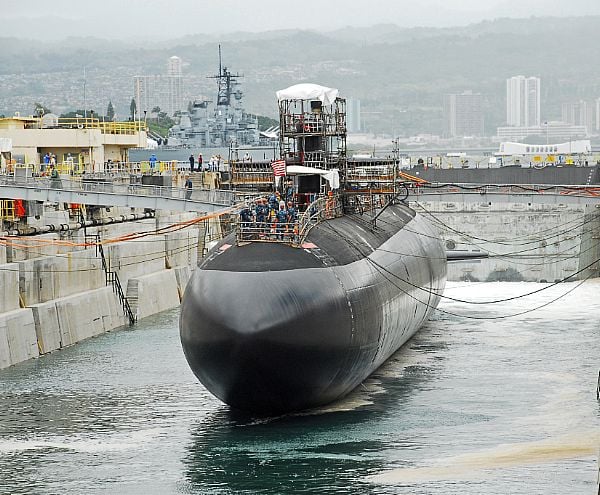
SAN DIEGO – Public shipyards are on track to reach 33,500 full-time equivalent employees by February, thanks to a hiring spree meant to get the yards back on track after both sequestration and a high attrition rate eroded workforce capacity.
When sequestration hit in March 2013, civilian employee furloughs and an eventual hiring freeze wreaked havoc on the military’s depots and shipyards. A sizeable portion of the workforce began reaching or nearing retirement, creating further headache for those responsible for planning aircraft carrier and submarine maintenance availabilities and executing them on time. The workforce was too small for the workload, leading to delays in ships being returned to the fleet and more money spent on overtime and contractor support.
Vice Adm. William Hilarides, commander of Naval Sea Systems Command (NAVSEA) that oversees the shipyards, said Sept. 1 at the American Society of Naval Engineers’ annual Fleet Maintenance and Modernization Symposium that the workforce has grown and almost reached its goal.
“The good news is the hiring has been approved and we’re almost at the 33,500 that we’ve said is our ultimate goal,” he said.
“That was a tremendously difficult process because we have not hired like that in the federal government in a very long time.”
The challenge, he said, is trying to get back to the previous pace of work with a younger and less experienced workforce.
“Across the four shipyards there are 5,000 employees with less than a year and a half experience at this point,” he said
“The shipyard commanders, it gives them an uneasy feeling. Interestingly, the fleet’s saying, okay, we gave you all these people, why aren’t you performing? We have some work to do there.”
Rear Adm. Mark Whitney, NAVSEA deputy commander for logistics, maintenance and industrial operations, told USNI News at the conference that the Navy was on track to have all the new employees onboard by the end of February, right on track for the mid-Fiscal Year 2016 goal. Shipyards have been hiring across the board – with a particular emphasis on trade skills and mechanics, but also engineers, quality assurance specialists and more.
During a panel presentation, Whitney said he’s found that the younger generation of shipyard workers can’t be trained the way the shipyard has traditionally trained its new employees. For starters, the younger workers are coming in with less experience working on cars or taking shop classes in high school, for example. They are also more visual learners, so the shipyards need to find ways to teach them brand new material quickly and in a “safe to fail” environment before sending the wave of new employees to the waterfront.
Also forcing a change in training tactics, “we can’t wait for what we’ve done before, with a lot of the over-the-shoulder greybeard transferring of knowledge,” Whitney said.
“The greybeards are leaving in large numbers.”
Though some are concerned about the workforce turnover, Whitney said “I view it more as an opportunity than a challenge. Granted there are challenges with new folks, but my observation, having been in command out at Puget Sound Naval Shipyard, what the new folks are bringing is a very needed questioning attitude. The biggest one is, why are we doing it this way? And that automatically makes you think, and so I think there’s just great opportunity.”
“The more they come in, the more that they become part of the solution, then they own it and it will stick with them for a long time,” he continued, adding that because so many young employees are coming in at once, “the momentum behind that questioning attitude is something you can feel.”
In total, the shipyards will hire about 9,000 workers from 2013 to 2016 to both increase the size of the force and combat attrition, Whitney said. But thus far, their performance has been solid.
“We are seeing people down on the waterfront executing work way quicker, with less quality issues, less safety issues, and less duration in time on those jobs,” he said.
Whitney said it was important to note that increasing the shipyard workforce to 33,500 was a start but not the end of the yards’ workload problems.
“The 33.5 does not get all the workload done, bottom line. We are not going to be able to get it all done without help from the private sector,” he said.
“We have a significant number of contract vehicles in place, but those are also not going to be enough.”
In a hearing on Thursday, Rear Adm. Jeffrey Harley, assistant deputy chief of naval operations for operations, plans and strategy (OPNAV N3/5B), said that the Navy would move some of its submarine work from the public shipyards to the private sector to help deal with the work overload.





